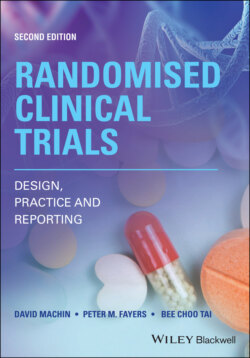Читать книгу Randomised Clinical Trials - David Machin - Страница 65
2.9.2 Trial publication
ОглавлениеOnce it is clear which patients are to be included in the final analysis, any exclusions after randomisation should be accounted for, described and justified in concordance with the CONSORT statement. Only then can work on the analysis and the trial publication be started. However, it is usually expedient to plan and prepare preliminary analyses prior to the final endpoint analysis, so that the results of the trial can be disseminated with the minimum of delay. Since the structure of research publications often takes a familiar format (indeed investigators should have a target clinical journal in mind even at the design stage), key items can be prepared in advance and some of these will be based on sections of the trial protocol itself as we will list in Figure 3.1. If nothing else, the protocol will provide much of the text outlining the background and purpose of the trial, the details of eligible patients, the interventions studied, the randomisation process, a sample size justification, key elements of the analytical methods and a list of some important references. Further, if the trial progress is monitored regularly with feed‐back reports to the investigating team, then these reports can form the basis for some tabular and graphical presentations that will be included in the final publication. Clearly, the responsible writing committee will have to amend and update some of these details as appropriate and the eventual presentation of results and ultimate discussion will depend on the trial findings.
